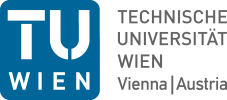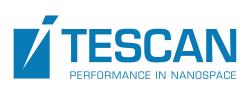You are here
Beneficiaries
Beneficiaries
 |
University of Iceland The University of Iceland is ELENA's Coordinating Institute and employing three ESR's. Two of these work in the field of experimental physical chemistry studying low energy interaction with precursor molecules for focused electron beam induced deposition and with model compounds for extreme ultraviolet resist material. These studies are conducted at the electron interaction lab the University of Iceland under the supervision of Prof. Oddur Ingólfsson, the coordinator of ELENA. The third ESR is working in the field of theoretical chemistry involving the use and further development of state-of-the-art simulation tools for long time scale simulations and electronic structure calculations. This work is conducted within the theoretical chemistry group at the University of Iceland under the supervision of Prof. Hannes Jónsson. The University of Iceland is a leading Icelandic university and an active participant in the international scientific and academic community. The University’s success in recent years has earned it a place amongst the very best universities according to recognised international rankings. At the University of Iceland great emphasis is placed on strengthening research and educating young people, preparing them for taking an active part in society as well as making their mark on the global community. Currently some 14,000 students are enrolled at the University, including over 1,100 international students. The faculty of physical sciences is one of 25 faculties within the five schools at the University of Iceland. It engages roughly 45 well-educated and well-trained academics, who for many years have been committed to teaching, training and research at high standards. An important part of the faculty’s operations is service teaching for other UI faculties. The faculty has it research research facilities at the Science Institute of the University of Iceland, an independent research institute embracing research in the field of chemistry, physics, mathematics and geology. |
 |
ARCNL nanophotochemistry group The ARCNL nanophotochemistry group will contribute to ELENA with synthesis of materials for EUV lithography and with fundamental studies of photoreactivity at the industrially relevant EUV wavelength of 13.5 nm. A unique set-up will be constructed for time-resolved spectroscopy using pulsed EUV excitation of thin films. |
 |
The University of Bremen The University of Bremen employs one ESR who works in the field of experimental physical chemistry studying surface processes induced by low energy electron interactions with precursor molecules for focused electron beam induced deposition and with model compounds for extreme ultraviolet resists. These studies are conducted at the Institute for Applied and Physical Chemistry of the University of Bremen under the supervision of Prof. Petra Swiderek. The lab focuses on the fundamental chemistry that underlies the diverse phenomena and processes that are induced by electron-molecule collisions. In particular, current projects cover areas ranging from electron-controlled chemical synthesis, surface modification and the chemistry underlying state-of-the-art nanofabrication all the way to astrochemistry. The University of Bremen is one of Germany’s eleven top universities of excellence, renowned for its strengths in sciences and engineering, humanities and social sciences. It collaborates closely with numerous independent research institutes, both on campus and around the region. Their competence and vitality have attracted more than 400 research and business ventures to the technology park around campus, creating a nationally recognized hub of high technology. Roughly 23,000 people are currently active as students, teachers, researchers, or employees of the University. The Faculty Biology/Chemistry (FB2) is one of 12 faculties at the University of Bremen. Its research focuses on both fundamentalas well as applied research in the areas of Biology and Chemistry and contributes to the MAPEX Center for Materials and Processes (http://www.uni-bremen.de/en/mapex.html) of the University of Bremen. All study programs are research oriented and specialize in developing the key competences students require for future university and non-university careers. Dr. Petra Swiderek is a professor for Physical Chemistry at the Faculty Biology/Chemistry (FB2) of the University of Bremen. She is involved in various international research collaborations and is currently the coordinator of the COST Action CELINA (CM1301) and an active member of the Marie Skłodowska-CurieInnovative Training Network ELENA. Dr. Swiderek received her PhD from the faculty of natural sciences at the University of Cologne in 1991. After holding a post doctoral position in Radiation Research at the Medical Faculty of the University of Sherbrookein Canada, she established an independent group in Cologne. Since 2003 she is full professor of Physical Chemistry at the University of Bremen and visiting professor at the University of Sherbrooke. |
 |
The Open University The Open University (OU) is a world leader in modern distance learning and has educated more than 1.94 million people worldwide since its launch in 1969. The OU is a pioneer of teaching and learning methods that enable people to achieve their career and life goals studying flexibly at times and places that suit them. It is one of the largest Universities in Europe with circa 174,000 students. The OU has an active research programme, winning around €32 million of research income annually. It enjoys an international reputation for the quality of its research in many fields. OU research is addressing global challenges. OU researchers explore global climate change, security, use big data sets to create models to raise alerts about potential outbreaks of epidemics and explore the origins of water in and on the moon. The Open University has extensive collaborations with governments, (companies (such as the space technology company e2v, NASA and the European Space Agency), the National Health Service (such as our work pioneering new methods in pharmacoepidemiology), conservation agencies (such as protecting the natural diversity of floodplain meadows and the world’s forests), banks (to reduce risk in financial decision-making) and international agencies and social movements on expanding civil, political and social rights. |
 |
Technische Universität Wien Technische Universität Wien (TU Wien) was founded as the Imperial and Royal Polytechnic Institute in 1815 and in 1865 was divided into five faculties. The first free election of a Rector took place one year later. In 1872, the university was renamed the "Technische Hochschule" (Technical University), with its first-ever doctorates awarded in 1902. In 1919, women were admitted for the first time as regular students. Since 1975, the university has officially been called the "Technische Universität Wien", in English simply TU Wien. TU Wien attained full legal capacity in 2004 as a result of the 2002 University Act. Since then, it has been managed by the Rector’s office and the newly instituted University Council. At the same time, the number of faculties was increased from five to eight. On 6 November 2015, TU Wien celebrated its 200 year anniversary. At TU Wien, we have been conducting research, teaching and learning under the motto 'Technology for people' for over 200 years. TU Wien has evolved into an open academic institution where discussions can happen, opinions can be voiced and arguments will be heard. Although everyone may have different individual philosophies and approaches to life, the staff, management personnel and students at TU Wien all promote open-mindedness and tolerance.
|
 |
The Friedrich-Alexander-Universität (FAU) Erlangen-Nürnberg The Friedrich-Alexander-Universität (FAU) Erlangen-Nürnberg is leading the work package „Nano-scale fabrication with FEBIP and EUVL“ within ELENA and employs one ESR. The ESR will be part of the “Microscopy and Nanolithography” group and will have the opportunity to working with an unique ultra-high vacuum setup, which houses a scanning electron microscope (SEM) with an electron-beam spot with a diameter < 3nm. This instrument will be used to perform, investigate and explore novel electron beam based nanolithographic methods. The ESR will be supervised by Dr. Hubertus Marbach. The FAU Erlangen-Nürnberg is a strong research university with an international perspective and one of the largest universities in Germany, with 40,174 students, 256 degree programmes, 4,000 academic staff (including over 647 professors), 180 million euros (2015) third-party funding, and 500 partnerships with universities all over the world. FAU’s outstanding research and teaching is reflected in top positions in both national and international rankings, as well as the high amount of DFG funding which its researchers are able to secure. The Department of Chemistry and Pharmacy has a long standing tradition of excellence – because of the vast resources, cutting-edge facilities, and outstanding faculty – and is ranked among the best in the country. This is documented by the quality of its programs, the caliber of its faculty, and the excellence of its students. The faculty and staff of the Department of Chemistry and Pharmacy provide an environment, where students at all levels explore, discover, and learn chemistry through coursework and research. In fact, undergraduate, graduate, and post-graduate students/research associates join the Department of Chemistry and Pharmacy from across the country and from countries all over the world to study in specific research programs directed by the University of Erlangen-Nürnberg’s chemistry professors. The Department employs 28 professors pursuing research in all areas of chemistry and pharmacy. Dr. Hubertus Marbach is the founder and leader of the working group “Microscopy and Nanolithography” at the Department of Chemistry and Pharmacy. He has been involved in various national and international research projects and is currently an active member of the FAU cluster of excellence “Engineering of Advanced Materials” (EAM), the DFG research unit FOR 1878 “funCOS”, the Erlanger “Graduate School Molecular Science” (GSMS), the COST Action CELINA (CM1301) and the academic/industrial Marie Skłodowska-Curie, Innovative Training Network; ELENA. In 2002 Dr. Marbach received his PhD with highest praise from the University of Hannover in the field of physical chemistry. From 2002-2004 he joined the “Surface Science Center” with John T. Yates, Jr. at the University of Pittsburgh, PA/USA before he moved to Erlangen. Dr. Marbach supervised 14 PhD students and his scientific activities are documented in 73 publications in refereed journals, more than 350 conference contributions as presenter or co-author and more than 50 invited lectures at international conferences and scientific institutions. |
 |
The University of Oslo The University of Oslo employs one ESR in ELENA. This ESR works with the synthesis and chemical and physical characterization of potential organometallic precursors for focused electron beam induced deposition. Particular attention is on precursors that contain gold. The preparative and characterization work is conducted in thelaboratories of the Section for Catalysis at the Department of Chemistry under the supervision of Prof. Mats Tilset. He is a long-time expert in organometallic chemistry. The University of Oslo is the largest Norwegian university, and hosts the largest chemistry department in Norway. The university, the department, and the sectionactively participate in the international scientific and academic communities. Currently about 28,000 students are enrolled at the University of Oslo, including 4,300 international students. The Department of Chemistry has about 35 permanent academic staff, all of whom are involved in research as well in teaching and training of students (BSc, MSc, PhD programs) and postdocs. The Section for Catalysis is also a partner in the Centre for Materials Science and Nanotechnology (SMN) at the Faculty of Mathematics and Natural Sciences. This partnership ensures access to state-of-the-art technologies and instrumentation for characterization and investigation of materials and compounds that will be of relevance to ELENA research. The Section for Catalysis has ca. 50 members (students and employees), of which about 60-70% are from abroad. The five professors in the Section for Catalysis conduct catalysis research in a broad sense, ranging from molecular chemistry (organic chemistry, organometallic chemistry, homogeneous catalysis) to solid-state catalysis and materials science (zeotype materials, metal-organic frameworks, supported catalysts). In all areas, the research includes synthesis, characterization, mechanistic studies, and computational studies. Prof. Mats Tilset, Ph.D., is a professor of chemistry in the Section for Catalysis at the Department of Chemistry. He teaches the introductory organic chemistry course and an advanced course in organometallic chemistry. He has been involved in various international research initiatives and currently participates in the COST ActionsCELINA (CM1301), CHARISMA (CM1205), and CHAOS (CA15106). From 2016 he is a participant in the academic/industrial Marie Skłodowska-Curie Innovative Training Network, ELENA. Prof. Tilset received his Ph.D. degree from the Department of Chemistry at the University of California, Berkeley, in 1985. He worked as a postdoctoral fellow at the Norwegian Institute of Technology, Trondheim, Norway,for three years before moving to his current affiliation at the University of Oslo in 1989. Here, he has been a full professor since 1993. |
 |
Bielefeld University Bielefeld University employs one ESR's in the field of experimental physics studying investigation of chemical reactions occurring during the exposure of surface bound molecular monolayers to electron and EUV radiation. We search for precursor molecules that form intermolecular links to their neighbours, so that a mechanical stable 2D carbon nanomembrane (CNM) is fabricated. The study is conducted at the chair for physics of supramolecular systems and surfaces under the supervision of Prof. Armin Gölzhäuser and Dr. Sascha Koch. Bielefeld University was founded in 1969 with an explicit research assignment and a mission to provide high-quality research-oriented teaching. Today it encompasses 13 faculties covering a broad spectrum of disciplines in the humanities, natural sciences, social sciences, and technology. With about 24,000 students in 115 degree courses and about 2,750 staff members (including 269 professors and lecturers as well as 1,390 academic staff) it is one of Germany's medium-sized universities. In relevant and focused areas covering the humanities and social sciences along with the natural and engineering sciences, Bielefeld University is one of the top research universities in Germany. The Chair for Physics of Supramolecular Systems and Surfaces focuses on the research of 2D materials and compounds as for instance nanomembranes and graphene or graphene-like systems. The Bielefeld group pioneered the production of 1 nm thin, mechanically stable Carbon Nanomembranes (CNMs) and graphene from molecular monolayers. The research of the group is focused on the fabrication of CNMs: monolayer formation, radiation induced cross-linking, and physical and chemical modification of CNMs. The group has developed and patented efficient protocols to produce customized CNMs and to transfer these thin sheets onto arbitrary locations. This opened horizons for the applicability of freestanding 2D nanostructures and to move them from one surface to another at will. For this purpose Bielefeld University operates advanced surface analytical techniques, including X-Ray and UV Photoelectron Spectroscopy (XPS, UPS), Low Energy Electron Diffraction (LEED), Scanning Tunneling Microscopy (STM), Atomic Force Microscopy (AFM), Scanning Electron Microscopy (SEM), Infrared (IR) spectroscopy, as well as the first Helium Ion Microscope (HIM) at a German university. This will allow the controlled tailoring of novel CNMs for basic research as well as technical application. Prof. Dr. Armin Gölzhäuser received his Ph.D. from Heidelberg University in 1993. From 1993-1996 he was a Feodor Lynen Fellow at the University of Illinois. In 2001, he received his habilitation (Heidelberg) and in 2003 he became a professor of physical chemistry at Marburg University. In the same year, he became a professor of experimental physics at Bielefeld University. Armin Gölzhäuser's research is focused on the fabrication, characterization and application of low dimensional nanostructures and functional materials. His laboratory operates modern analytical tools: electron microscopes, photoelectron spectrometers, scanning probes and a helium ion microscope (HIM). He has a strong interest in the technological application of nanostructures and in 2011, he founded CNM Technologies, a start-up company dealing with applications of carbon nanomembranes. He is a founder of the Bielefeld Institute for Biophysics and Nanoscience (BINAS), and he is an associate editor of the Beilstein Journal of Nanotechnology. Dr. Sascha Koch wrote his diploma thesis about Scanning Tunneling Microscopy of organic molecules ans SAMs in the group of Prof. Dr. Rolf Möller at the University of Duisburg-Essen and obtained his diploma in physics in 2007. From 2008 to 2011 he was PhD student in the group of Prof. Dr. Ernst Meyer at the University of Basel, investigating the super structures of graphene and hexagonal boron nitride formed on transient metals by means of Atomic Force Microscopy (AFM) and Kelvin Probe Force Microscopy (KPFM). After further 8 month as a Post-Doc in Basel, he worked 3 years for Endress+Hauser GmbH+Co.KG in Maulburg (Germany) as a Technology Specialist in the section of ceramic pressure sensors for i.a. medical applications. Since November 2015 he continues his scientific work in the group of Prof. Dr. Armin Gölzhäuser in the field of 2D materials and Nanomembranes. |
 |
Delft University Of Technology The project, Controlled nano-patterning using Focused Electron Beam Induced Deposition (FEBID), aims at the development of instrumentation and methods to use FEBID for the fabrication of nano-structures and nano-devices. Key issues are i) control over size and shape of deposits and ii) reproducibility. FEBID is a technique that involves multiple parameters, such as the electron flux, electron energy, electron exit area of scattered electrons, energy distribution of surface electrons, substrate material, substrate temperature, substrate surface properties, the precursor gas flux, precursor surface diffusion, adsorption/desorption of precursor molecules, electron stimulated desorption, electron induced dissociation cross section, electron beam induced heating, and background pressure (residual gases). To develop the technique into a reliable lithography tool for nano-prototyping, or even for complementary lithography in the semiconductor industry, requires a thorough characterization of all parameters. The CPO group at TU-Delft will focus on these key issues. Parameter studies will be done in combination with reproducibility experiments to gain understanding of, and to achieve control over, process parameters. Experimental tests with novel precursors, developed by other partners in the network, will be performed. The metrology of nano-structures will receive much attention, as the precise determination of nanometer-sized patterns is far from trivial. To this end electron microscopy imaging will be combined with in-situ AFM imaging. The ESR on the project at TU-Delft will be trained in electron beam instrumentation, electron beam lithography, and electron-induced dissociation of molecules. Two secondments are planned: one at Phenom-World, where the focus will be on implementation of FEBID in their table-top SEM’s (the development of such low-cost nano-prototyping tools would guarantee a widespread use of the FEBID technology), and one at IMEC to study the feasibility of using FEBID as a lithography technique complementary to resist-based lithography. |
 |
EMPA, Materials Science and Technology Empa, the Swiss Laboratories for Materials Science and Technology is bringing long-standing FEBID expertise into ELENA's training network and employing one ESR. The ESR will work on enlarging the portfolio of FEBID precursors by developing novel temperature-controlled gas injection hardware and FEBID protocols to enable deposition of electrically tunable metal nanowires with novel low vapour pressure FEBID precursors. These studies are conducted at the laboratory for mechanics of materials and nanostructures at Empa in Thun, Switzerland, under the supervision of Dr. Ivo Utke. Empa is an interdisciplinary research institute of the ETH Domain and conducts cutting-edge materials and technology research. Empa’s research and development activities focus on meeting the requirements of industry and the needs of society, and thus link applications-oriented research to the practical implementation of new ideas in the areas of nanostructured, “smart” materials and surfaces, environmental, energy and sustainable building technologies as well as biotechnology and medical technology. Empa’s mission is to kick-start innovation: we are capable of providing our partners with customized solutions that not only enhance their innovative edge and competitiveness for global markets, but also help to improve the quality of life for the public at large. Through an efficient technology transfer Empa is turning research results into marketable innovations. In a survey of 112 leading European R&D managers, Empa is within the TOP10 highly reputed R&D organizations (together with Fraunhofer, Max Planck, IBM, Siemens, and Philips). Empa employs a staff of about 1'000 of which 27% are female. More than 500 are engineers and scientists with advanced university degrees, 29 are professors, ≈100 are postdocs, ≈200 are PhD students, ≈200 are Bachelor and Master students. Empa consists of five departments with 29 research labs and eight support divisions and organizes its research activities in five Research Focus Areas, which encourage networked thinking and inter- and transdisciplinary cooperation. About 280 employees are presently engaged in 37 EMPA spin-offs and start-ups. EMPA is continuing to disseminate the innovations to a broad public via its social media channels, news and video portals. The Laboratory for Mechanics of Materials and Nanostructures is one of the 29divisions of Empa. Within four groups headed each by senior scientist the lab performs cutting edge research in the fields of FEBID and thin films, mechanics, electrodeposition, and microanalysis to develop novel processes for novel model materials within a team of about 30 people. Dr. Ivo Utke is a permanent scientist at Empa and heading the group of low dimensional materials. He has hosted international summer schools and workshops on FEBIP, nanomanipulation, and SEM analysis, and runs a doctoral school together with Prof P Hoffmann on FEBIP and FIBIP at the Ecole Polytechnique Federale de Lausanne(EPFL). He has been actively involved in various international research projects and is member of the Celina COST Action CM1301. Dr. Ivo Utke received his PhD from thefaculty of Natural Sciences of the Humboldt University in Berlin in 1995 before working as a post-doctoral researcher at EPFL in Lausanne, Switzerland. He took his position as a scientist at Empa in 2004. |
 |
Imec Imec is the world-leading research institute in nanoelectronics and digital technologies. The combination of our widely acclaimed leadership in microchip technology and profound software and ICT expertise is what makes us unique. As a trusted partner for companies, start-ups and universities we bring together close to 3,500 brilliant minds from over 70 nationalities and a world-class infrastructure, including 2 state-of-the-art cleanrooms. Therefore, imec offers a stimulating environment to perform PhD research. In ELENA, we will recruit an Early Stage Researcher (ESR) to work on fundamental understanding of the mechanisms of interaction behind the photoresist chemistry induced through EUV radiation and the boundary lithographic process conditions. In addition we will offer secondments two ESR from the network. The first will be trained to become acquainted with the high-volume semiconductor lithography field and the second on state-of-the-art EUV lithography close to the level of industrial application. |
 |
TESCAN Ltd. TESCAN Ltd. is a leading global supplier of scanning electron microscopes and related charged-particle beam instruments, accessories and solutions for nanotechnological analyses. The reputation and brand name of TESCAN has been built on designing and manufacturing scanning electron microscopes and complex, multi-modal system solutions for a wide variety of applications from semiconductors to biological imaging to mining. The headquarters is located in Brno, Czech Republic. Subsidiaries spanning four continents ensure the worldwide reach of expertise that is developed in Brno. Under the label “Excellence in scientific instrumentation”, our customers can find unique solutions with a wide range of analytical capabilities. The TESCAN sales and service network covers countries all over the world and almost 2000 SEM installations in more than 77 countries attest to the technological excellence of TESCAN products. TESCAN staff is experienced in handling all aspects of coordinated research and training projects. Laboratories and clean rooms provide more than 15 electron microscopes, focused ion beam workstations and other laboratory equipment. In 2013, TESCAN R&D shifted to a newly constructed building housing R&D Application and Demo labs with a total area of more than 320 m2. As part of the ELENA consortium, TESCAN will host and train an Early-stage researcher in the selection of novel precursors for building 3D-nanostructures as well as in their structural and compositional analyses. The research and training will be supervised by Dr. Jaroslav Jiruše, head of R&D Physics. Jaroslav graduated from the Brno University of Technology in 1996. His PhD study at the same university included two research fellowships in Aarhus University, Denmark. He successfully defended his thesis on low-energy electron diffraction, and joined TESCAN in 2005. He has been responsible for the key developments in TESCAN and is the author of patents for detectors and columns for scanning electron microscopes. Jaroslav successfully served as the coordinator of the EU Framework 7 project UnivSEM(2012-2015). The organizational aspects of the project will be handled by Dr. Nagavalli S. Kiran, Project manager R&D, who will be responsible for the management of specific activities as well as the dissemination and communication among project partners. Kiran joined TESCAN in 2015, following a two-year stint in a Czech biotechnology start-up. He obtained his Bachelors and Master degrees in India and defended his PhD thesis form Masaryk University in Brno in 2006. In TESCAN, Kiran is responsible for the administrative and management aspects of R&D projects at both national and European levels. He has been successfully building bridges between the scientific and administrative sections of the R&D teams. |
|
|
ZEISS ZEISS is an internationally leading technology enterprise operating in the optics and optoelectronics industries. ZEISS develops and distributes lithography optics, measuring technology, microscopes, medical technology, eyeglass lenses, camera and cine lenses, binoculars and planetarium technology. With its solutions, the company constantly advances the world of optics and helps shape technological progress. Semiconductor Manufacturing Technology With a broad portfolio of products and globally leading know how in the areas of lithography and optical modules, the Business Group Semiconductor Manufacturing Technology (SMT) covers key processes in microchip production. Its strategic business unit Semiconductor Metrology Systems (SMS) focuses on a key component in Semiconductor Manufacturing, the photomask. Core expertise in light and electron optics, complemented by a pioneering femtosecond laser technology form the foundation of a product portfolio comprising in-die metrology, actinic qualification, repair, and tuning of photomasks. Further information at www.zeiss.com/smt |
